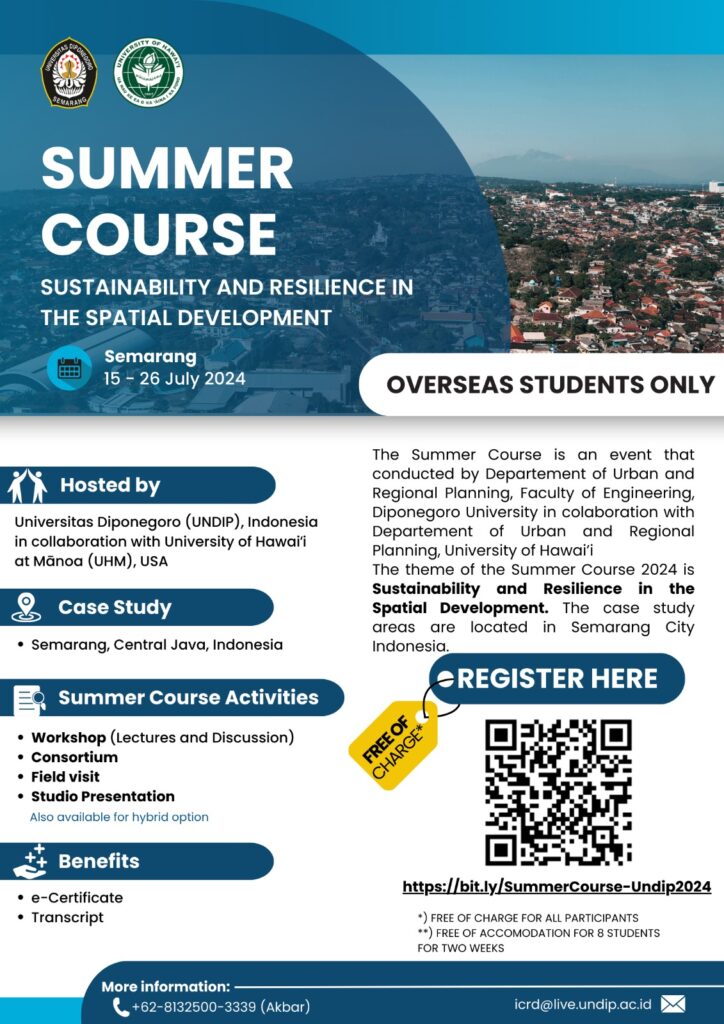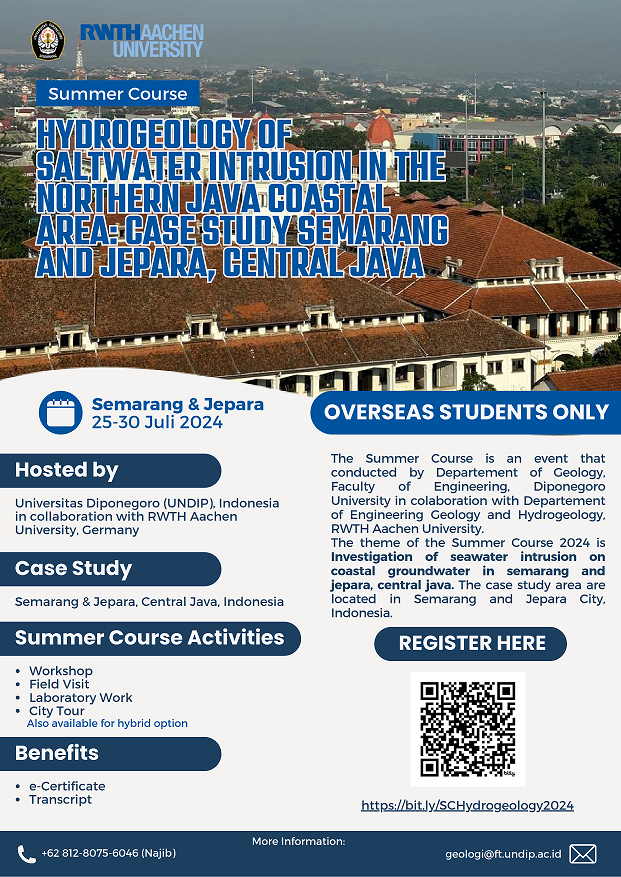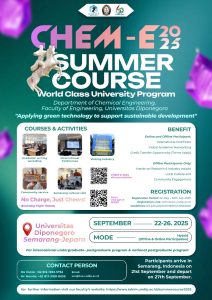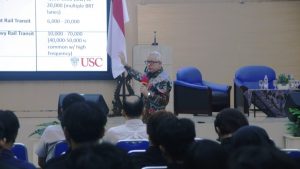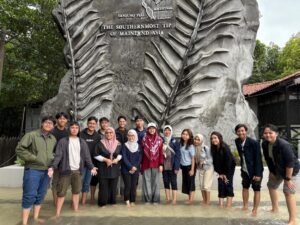Summer Course
Cultivating Superior Generations with Cultural Integrity and Fair Governance Through Innovation and Technology
Summer Course at Engineering
Undip’s vision to enter the world’s top 500 is clearly stated in the 2020-2024 Strategic Plan, so that academic activities carried out need to refer to ranking indicators, including the number of international students. Various activities have been planned to support these indicators and specifically for international student activities, using data for 2022, the number of international students at Undip has reached 770 students. It seems that this number can increase further to support Undip’s ranking to reach 500 in the world, which requires 4-5 times the number of international students. Scholarship programs and summer course programs have been offered to increase this number.
The increase in the number of summer course participants represents an almost 3-fold increase, namely 149 in 2019 and an increase of 426 in 2020 and however, it decreased slightly to 401 in 2021 and 770 in 2022. The increase that occurred in the last few years is a significant achievement. very encouraging and should be improved. Decline The number of countries involved also appears to have increased from 15 to 21 countries. It seems that this acceleration is still not enough to reach Undip’s position of 800 in the world ranking. Therefore, strategic efforts need to be made to increase the number of international students at Undip, one of which is through the summer course program .
The model for international student participation in summer courses at Undip in 2023 is in online form. It is hoped that each faculty can hold summer courses with an average number of foreign students of 60-80 foreign students per faculty. Apart from that, there are also summer courses held offline which can attract more foreign students. Based on the activity monitoring program that has been carried out, it can be seen that only 3 faculties have scores in the good category, while the others are still in the score category that needs to be improved. Therefore, there needs to be appropriate planning efforts to obtain the number of foreign students according to the target in 2023.
The principle implemented in the 2023 summer course program is to attract foreign students by improving the quality of collaboration that has been built by each faculty. This means that faculties need to be oriented first with the MoU they have so that they can ultimately achieve reciprocal programs that are not only needed by Undip, but also partner universities. It should be stated that apart from the foreign students obtained, the implementation of this summer course can increase the number of foreign lecturers involved in this program as resource persons. These foreign speakers can be facilitated through university financial accountability.
Want to know more?
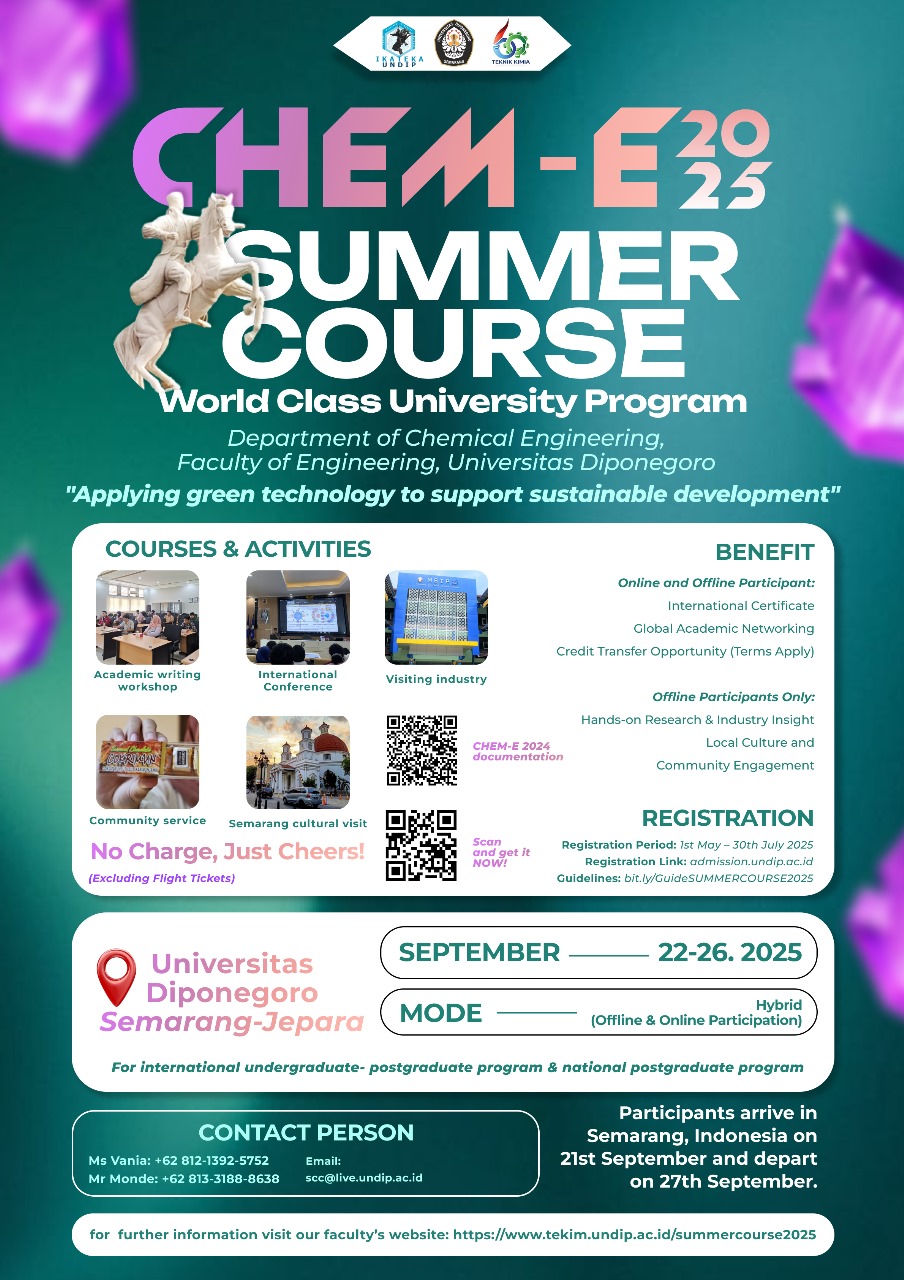
Chem-E Summer Course 2025: Applying Green Technology to Support Sustainable Development
Recently, green technology has been a topic that is widely discussed by various parties. Green technology is a very interesting and important field to be implemented in order to achieve sustainable development, reduce environmental impacts, and improve the quality of life in Indonesia. This technology can also be used to improve energy efficiency, reduce pollution, and utilize natural resources responsibly. Therefore, the Department of Chemical Engineering will organize the Summer Course program named Chem E 2025 with the theme “Applying green technology to support sustainable development”. This program has five main activities, such as: (i) academic writing workshop, (ii) international conference, (iii) visiting industry, (iv) community service, and (v) Semarang cultural visit. The aim of Chem-E Summer Course 2025 is to enhance analytical and critical-thinking skills through problem-solving sessions and case studies in the chemical engineering field. Further, an Introduction to the local culture of Semarang, Indonesia is also the objective of this program. Course : 22 – 26 September 2025 (offline & online) Activities ; Academix Writing Workshop, International Conference, Visiting Industry, Community Service, Cultural Visit Recognition : Certificate, Academic Transcript Topic Registration: admission.undip.ac.id Registration Period: 1 May – 30 July 2025 Guidelines: bit.ly/GuideSUMMERCOURSE2025 Contact Person : Ms Vania

